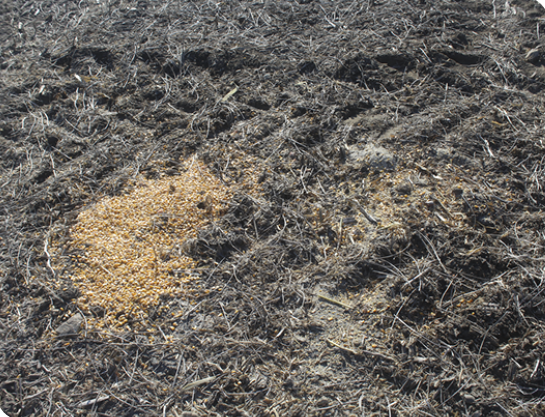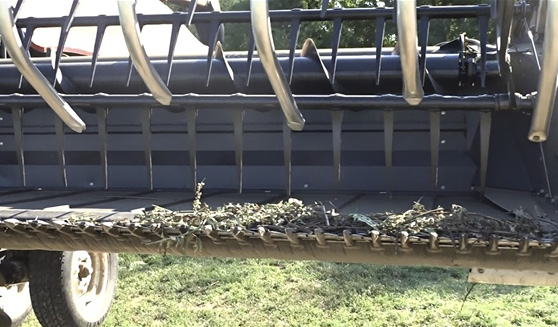A brief 20- to 30-minute cleaning commitment will remove some of the material that may easily come loose later in the field. Priorities for this cleaning should include:
1. Run unloading auger empty for at least one minute.
2. Open the clean grain and tailings elevator doors, rock trap and unloading auger sump.
- Make sure all bystanders are at least 50 feet away.
- Optional: Remove the header from the combine prior to self-cleaning.
3. Start the combine and separator.
- Adjust cleaning shoe fan to full speed for maximum airflow and alternately open and close cleaning shoe sieves electronically.
- Adjust rotor to full speed for maximum air suction and alternately open and close concaves.
4. Operate the combine this way for at least two minutes for self-cleaning.
- Optional: Drive over end rows or rough terrain to dislodge material during operation.
5. Clean any material left in the rock trap.
6. Use a leaf blower or air compressor to remove material from the exterior of the combine, focusing on the head, feederhouse, and axle and straw spreader at the rear of the machine.
7. Remember to close the doors to the rock trap, and clean the grain elevator and unloading auger sump.





